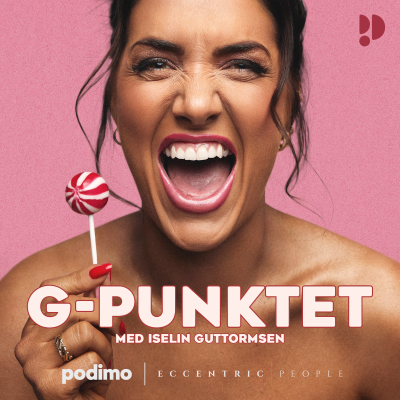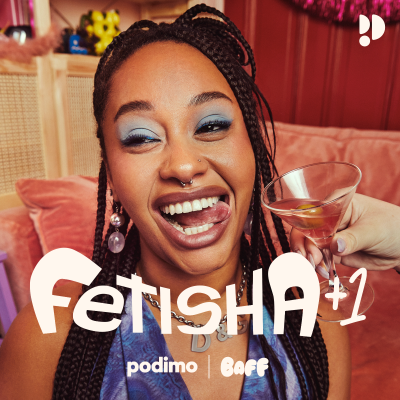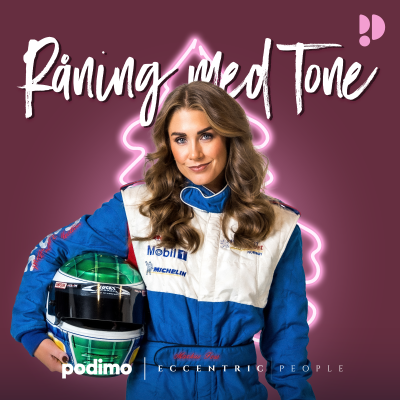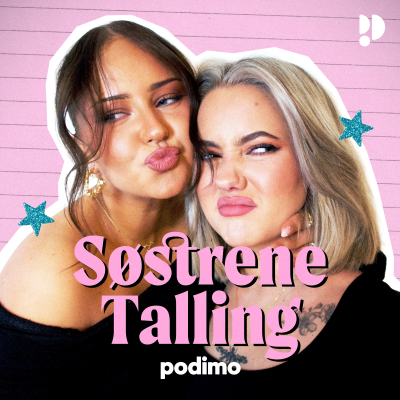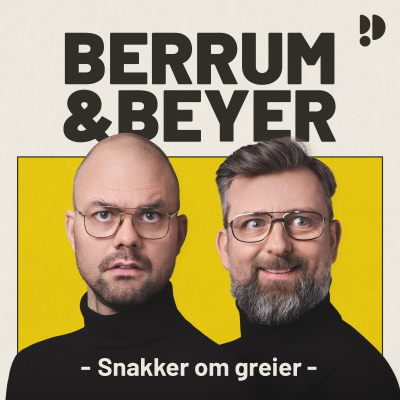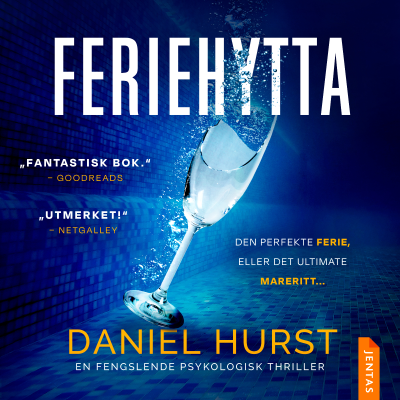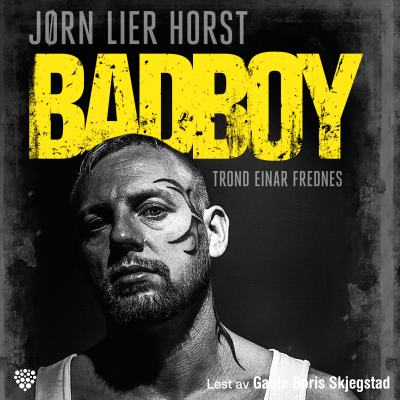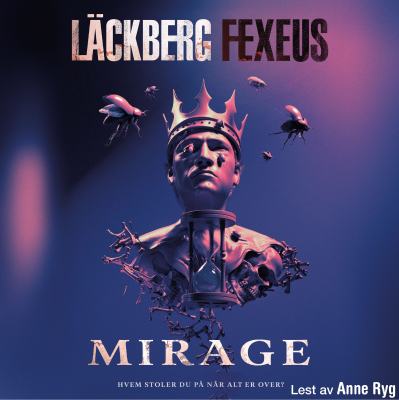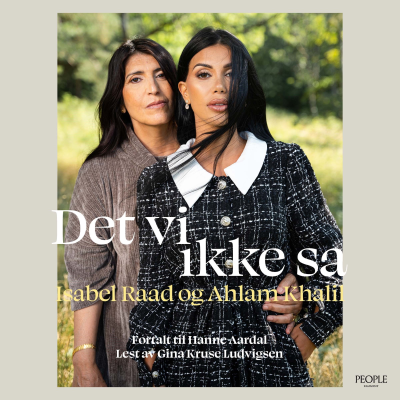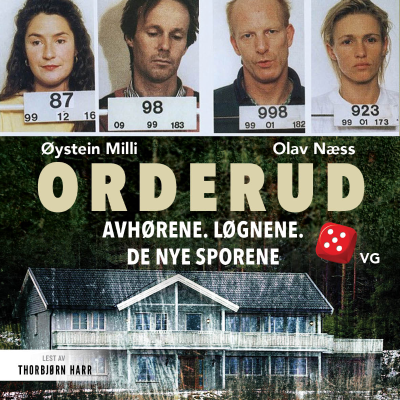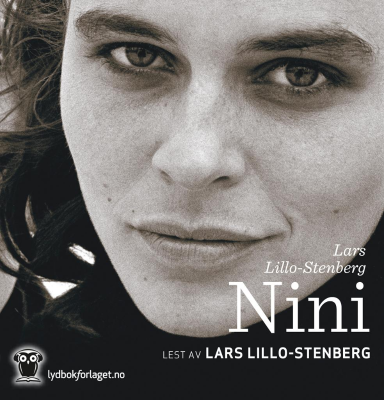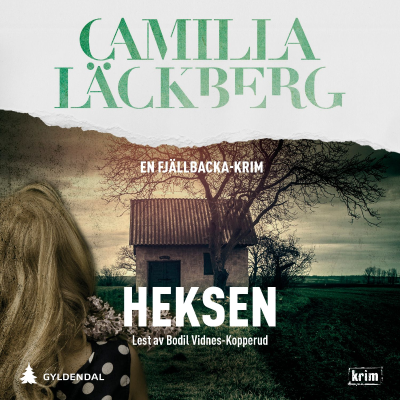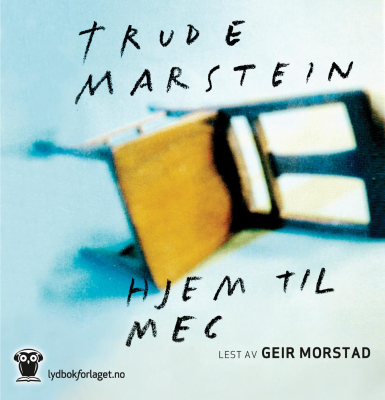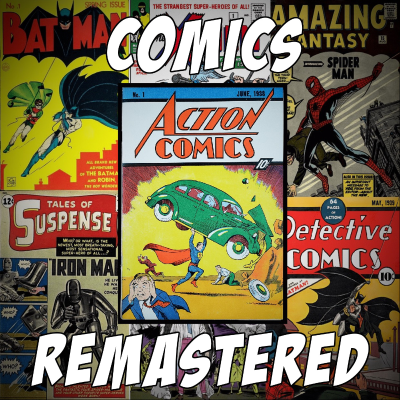
Comics Remastered
Podkast av Sean Cocca
Prøv gratis i 14 dager
99 kr / Måned etter prøveperioden.Avslutt når som helst.

Mer enn 1 million lyttere
Du vil elske Podimo, og du er ikke alene
Rated 4.7 in the App Store
Les mer Comics Remastered
A primer on comic book characters, themes, and franchises.
Alle episoder
3 EpisoderAs a child, I didn’t have a whole lot of exposure to comic books. I was the oldest in my family, so I didn’t have the benefit of an older sibling who could introduce me to them. And, as far as I know, my parents weren’t all that into comics either. I had some nominal exposure to certain properties. I was familiar with the big names like Superman and Batman. Movies had been made about *them*. They were kind of hard to ignore. But, other than those big two, I had no real comic book knowledge or experience. I honestly can’t remember if I even knew they were comic book characters. At that time, I was more of a fan of cartoons. I loved shows like Thundercats and the Real Ghostbusters. Like many kids my age, I spent a lot of my free time on Saturday mornings plopped right in front of the TV to catch all my favorite shows before I’d be kicked out of the house to go play outside. Many of those shows still have a special place in my heart. Fast forward to Halloween 1992. I was 9 years old and enjoying my regular Saturday morning ritual of eating as many bowls of sugary cereal as my mother would allow while watching close to 4 hours of brightly colored, often action packed cartoons. On this particular morning, I was surprised to see a new show. It was called X-Men and, honestly, it blew me away. It’s no exaggeration for me to say that this show single-handedly started my obsession with comic books. 75 episodes spread over 5 seasons just wasn’t enough for me. I had to know more. By 1995 I had convinced my mom to let me spend some money to purchase some comic book subscriptions. X-Men and Uncanny X-Men would be delivered to our mailbox once a month. The anticipation absolutely killed me, but it was always worth the wait once I was able to leaf through those glossy pages. But who are the X-Men? Answering that question in detail would likely take several hours. Perhaps days. Definitely days. Diving into the quagmire that is the history of the X-Men could easily provide enough content for its own podcast. In fact, there are a few out there. I checked. But don’t worry. I’m not here to give you every little detail about the X-Men. I’m here to give you broad strokes. The X-Men, like many of Marvel’s golden age comics, was created by Stan Lee and Jack Kirby. They first appeared in The X-Men #1 in 1963. If you’re completely unfamiliar with them (and honestly, I don’t know how you could be with close to a dozen animated shows since the 60s that either starred or featured the X-Men, coupled with nearly the same number of big budget Hollywood blockbuster films, and a handful of live action TV shows, as well as several video games, but, hey, maybe you just woke up from a coma), the X-Men are a team of superheroes. Specifically, they’re mutants. The team was formed by Professor Charles Xavier (affectionately referred to as Professor X), who is a mutant himself with immense telepathic abilities. Xavier recruits other young people who possess similar special abilities. These abilities are tied to the X-gene — a mutation in otherwise normal human DNA. In the team’s original incarnation, these abilities ranged from Cyclops’ powerful optic beams, to Jean Gray’s telepathy and telekinesis, to Iceman’s ability to manipulate ice and cold, to Beast’s increased strength, stamina, and intelligence (and huge hands and feet), to Angel’s giant freaking wings that sprout from his back. Over the years, the team’s membership has changed. Obviously, anyone familiar with the animated show from the 90s knows names like Wolverine, Storm, Gambit, Rogue, Banshee, Nightcrawler, Colossus, everyone’s favorite sparkler shooting mall rat Jubilee, and many others. There have also been several other teams that have branched off from the main X-Men team, like the New Mutants, X-Force, X-Factor, Excalibur, Generation X, and literally over a dozen others. There have been over 100 members of the X-Men. This includes some former villains who have joined their ranks, as well as a few non-mutants who have snuck in. I meant it when I said you could devote an entire podcast to just explain what the heck is going on with this series. Because there’s a lot. Speaking of villains though, you can’t talk about Charles Xavier and the X-Men without mentioning their greatest adversary — Magneto, the master of magnetism. I know, it’s kind of on the nose. I’ll give Stan Lee and Jack Kirby a pass for creating such a compelling character. Magneto and Professor X are old friends who had a bit of a falling out. You see, they both want to ensure the survival of the mutant race. Where they differ is how to reach that goal. While Xavier walks the path of peace and understanding, seeking to forge an alliance of sorts with the humans, Magneto takes a decidedly harder stance. He wants to conquer the humans race through force. He views mutanity as the superior race, and worthy to rule over the lesser humans. Much has been made of the relationship between Xavier and Magneto over the years. Many of the X-Men’s early battles were against Magneto and his Brotherhood of Evil Mutants who sought to enslave humanity. But Magneto isn’t always the bad guy. Sometimes he’s even a member of X-Men. There are a few timelines where Magneto is actually the leader of the X-Men, instead of Xavier. Now, I mentioned timelines just then. There are a lot of those in X-Men comics. Alternate timelines and alternate realities aren’t a new thing in comics. Different books can take place in different timelines and/or realities. I remember one time I was reading an issue of one X-Men comic. It was the climax of the Legacy Virus storyline. Long story short — the legacy virus was a fatal virus that only affected mutants. In this storyline, Colossus is faced with an impossible decision. A cure for the virus has been developed, but it required the death of the first person injected with it for it to activate and save all the others who were infected. Naturally, Colossus sacrificed himself to make this happen. It was a heavy, emotional issue. Colossus’ sister had died from the virus. There was a real weight to what he was doing. I remember tearing up a little bit as I watched him die over the course of a few panels. I finished that issue, put it down, and picked up the newest issue of the other X-Men comic that had come that month. As I started reading, who did I see? Colossus, of course. He was alive and well in this book. Completely different storylines. It kind of lessened the impact of his sacrifice, to say the least. But that’s the problem with comics sometimes. There can be so many versions of your favorite heroes. Sometimes, they exist concurrently. It can get confusing. Frustrating even. But you learn to deal with it. Now, I can’t talk about X-Men without addressing some of the controversy surrounding the themes it addresses. Well, maybe controversy isn’t the right word. At least it’s not anymore. However, it could definitely be argued that it was at the time. X-Men was first published in the early 1960s. The themes it addressed of injustice and racism thrust upon a minority group paralleled the real world events of the Civil Rights Era. Professor X and Magneto were even compared to Martin Luther King, Jr. and Malcom X, respectively. There were several instances, both in the animated show and in the comics, of groups like the Friends of Humanity, Humanity’s Last Stand, the Church of Humanity, and Stryker’s Purifiers rallying other humans to commit violence against mutants. These groups evoked images of the Ku Klux Klan, both explicitly and implicitly, and their actions were often akin to mob violence and lynchings. I always kind of had a problem with the way mutants were treated in the Marvel Universe. Mutants were feared, by and large, because they had a genetic mutation that gifted them abilities far beyond that of mortal men. Well, most of the time. There are plenty of examples of mutants who have abilities that basically just make their lives harder with no discernible benefit. Beak, for example. Look him up. He drew the short straw in the mutant lottery. But, the thing is, mutants are not unique in the Marvel Universe. There are plenty of other people who are effectively mutants who are not feared by the average Marvel citizen. In fact, they’re actually celebrated. The Fantastic Four are one such group. The Avengers are another. There are several other examples out there, but the question remains — what makes mutants so particularly hateable? Why does humanity focus on them when there are so many other metahumans out there who pose just as much of a threat to humanity’s safety, if not more, as the X-Men do? Maybe we’ll never know. In the end, the X-Men, through all their various incarnations, are still sworn to protect a world that hates and fears them. They’re the scrappy underdogs who rise to every occasion (well, mostly). That’s the ultimate reason for their staying power. 5 decades later, and they’re still going strong. If you want to check out some essential X-Men comics, you can pick up the Dark Phoenix Saga from 1980, Days of Future Past from 1981, Dancin’ in the Dark from 1983, The Trial of Magneto from 1985, Welcome to Genosha from 1988, Legacies from 1993, and The New X-Men from 2001-2003. I hope you’ve enjoyed this deep dive into the world of comics. I’ll try to bring you interesting topics and compelling characters as they arise. If you have suggestions on topics or characters you’d like to see featured in a future episode, feel free to contact me on twitter. You can find me at @eyeheartcomics [https://twitter.com/eyeheartcomics]. Until next time, this has been Comic Remastered. The post The X-Men [https://www.childhoodremastered.com/2018/10/25/episode-3-the-x-men/] appeared first on Childhood Remastered [https://www.childhoodremastered.com].
When you hear the name Captain Marvel, what comes to mind? I’m sure most of you would think of the latest movie in the Marvel Cinematic Universe. Brie Larson is set to take up the mantle of the cosmic champion March 8, 2019 and, for many, the excitement is palpable. But who is Captain Marvel? Well, the answer to that really depends on whom you ask. And, if they’re a comic book fan, it probably depends on when they started reading comics and, most importantly, whether they’re a Marvel or DC fan. You see, there have been a couple Captain Marvels. Well, more than a couple. Seven, actually. And that only counts the ones that have been published by Marvel Comics. There’s also a DC superhero by the same name, and a legal fight between DC and Fawcett Comics over this character back in the 50s was integral to Marvel decision to create their own character by that name. One of the dirty little secrets of the golden and silver ages of comics is that there was a problem with plagiarism. A big one. Just think about it. How many comic book characters can you think of that are basically carbon copies of other characters from other companies? Specifically, from Marvel and DC we have Deadpool and Deathstroke, Black Cat and Catwoman, Hawkeye and Green Arrow, Namor and Aquaman, the Nova Corps and the Green Lantern Corps, X-Men and the Doom Patrol, and many more. Superman has several clones as well, but I don’t mean actual clones. I mean, there are several of those, but that’s a topic for another episode. One of those clones was the very first Captain Marvel. A year after Jerry Siegel and Joe Shuster created Superman for Action Comics in 1938, C.C. Beck and Bill Parker created a character called Captain Marvel. Cap was first published in Fawcett Comics in 1940. For anyone unfamiliar, Cap is basically a magical Superman. On the surface, he doesn’t seem all that similar. He’s not an alien. He’s actually a young boy who is granted superhuman abilities by an ancient wizard. His powers are derived not from Earth’s yellow sun, but from ancient gods like Hercules, Hermes, and Atlas. The problem is he looked really similar to Superman. So much so that DC, who now owned the Superman character, sued Fawcett in 1953 for copyright infringement. The case eventually settled and it was found that, while Captain Marvel was indeed a ripoff of Superman, DC hadn’t done its due diligence to maintain the copyright. That meant they couldn’t stop Fawcett from publishing Captain Marvel-related comics. But Fawcett did stop. Waning comic book sales coupled with the prospect of future legal costs convinced Fawcett to get out of the comic book industry. Fawcett’s Captain Marvel eventually found his way to the pages of DC, but not before Marvel Comics decided to create their own Captain Marvel character. See, by the time all these legal issues had been settled, Marvel was really starting to come into its own. The 1960s were the Golden Age of Marvel, and with the recent availability of the name, it made sense for Marvel’s writers to strike while the iron was hot. In 1967, the first iteration of Marvel Comics’ Captain Marvel appeared in Marvel Super-Heroes #12. This character, whose secret identity was a Kree warrior aptly named Mar-Vell, became the champion and protector of Earth after betraying the Kree Empire to align with his newly adopted world. The character’s popularity rose and fell through the years, leading to changes that writers hoped would attract new readers. Eventually, Mar-Vell graduated from Earth’s guardian to a cosmic guardian after Eon, one of the oldest and most powerful cosmic beings in the Marvel Comics universe, appointed him Protector of the Universe. After a few years, Mar-Vell finally met his end — not at the hands of some galactic-level calamity like Thanos or the Celestials. No, what finally ended Mar-Vell’s long battle was something with which many of us are probably familiar — Cancer. In 1982, The Death of Captain Marvel chronicled Mar-Vell’s cancer diagnosis and his eventual death. It was Marvel’s first long form graphic novel. After Mar-Vell, several other heroes took up the mantle of Captain Marvel. Monica Rambeau was the first. She had energy manipulation powers and was a member of the Avengers. She eventually joined another superhero team and took on the name Pulsar. Next was Mar-Vell’s genetically engineered son Genis-Vell. A genetic clone of his father, Genis utilized the same powerset and equipment. He eventually changed his name to Photon and, because of an issue with his resurrection that was tied to the destruction of the universe (I know, I know), his body was scattered throughout the cosmos to prevent a universal cataclysm. Phyla-Vell, Genis’s sister (Get it? Genus? Phylum?) became the next Captain Marvel. She later drops the Marvel name to become the new Quasar, before ultimately sacrificing her life to save the Guardians of the Galaxy. Khn’nr followed as the new Captain Marvel. Now, I say his name is Khn’nr, but I don’t actually know if that’s how you pronounce his name because it’s spelled KHN’NR. He was a Skrull sleeper agent who had his DNA combined with Mar-Vell’s. Apparently, some Skrulls don’t believe in using vowels when naming their children. If you weren’t aware, the Kree and Skrull empires have been at war with each other for hundreds of thousands of years. Khn’nr turned against his fellow Skrulls and fought to defend earth during the events of Secret Invasion. The penultimate Captain Marvel was Noh-Vall. He was yet another Kree warrior who joined the Dark Avengers, but left that team when he discovered it was a team of villains. He renamed himself Protector when the Kree Supreme Intelligence granted him Mar-Vell’s original Nega Bands, which gave him a powerful suite of abilities. Now, if you’re a bit confused, don’t worry! I am too. That’s just the nature of comics. Multiple people all sharing the same code name over multiple books. Captain Marvel is essentially like a brightly colored alien James Bond — just in spandex. In fact, it’s almost exactly like James Bond. Everyone remembers the first one (Mar-Vell/Sean Connery), maybe has a favorite among the middle group, and is very impressed with the latest iteration. That’s about as good a segue as I can make to Carol Danvers. She’s a character who has existed in Marvel Comics since the 60s. She was a colonel in the US Air Force and security chief of a top secret military base. This is where she initially meets Mar-Vell, who she knew as Dr. Walter Lawson. Eventually, she is caught in an explosion of a Kree device,and nearly dies as a result. It was later revealed that the device actually merged her DNA with Mar-Vell’s, which made her a human-Kree hybrid. This gifted her a number of abilities, such as superhuman strength, endurance, stamina, and durability, the power of flight, and various forms of energy manipulation. She also had limited precognitive abilities and the benefits of an amalgamated Kree physiology, which made her immune to most toxins and poisons. She debuted these powers as Ms. Marvel in the 1977. From the very beginning, she was a very progressive character. Her name incorporated the title “Ms.” instead of the more common “Miss” in apparent solidarity with the real world feminist movement at that time. Carol Danvers also fought for feminist causes in her civilian life like equal pay for women. Her popularity as Ms. Marvel (and, for full disclosure, a number of other identities) ebbed and flowed for nearly 4 decades before she assumed the mantle of Captain Marvel in 2012. She interacted heavily with the X-Men and the Avengers during the 80s and 90s. Anyone familiar with the X-Men animated series from the 90s may remember Ms. Marvel making an appearance in an episode that delved into the origin of Rogue’s powers of flight and super strength. In the 2000s she sided with Iron Man and advocated for the Superhuman Registration Act during the events of Civil War. After becoming Captain Marvel in 2012, she participated in crossover events like Avengers Assemble, Secret Wars, and Civil War II. She’s been a Guardian of the Galaxy, an Avenger, and one of the Ultimates. She had her own self-titled books as well and has spent a lot of time off-Earth battling galactic foes. She’s currently the focus of “The Life of Captain Marvel” which has been in publication since July 2018. In that story, it’s revealed that Carol Danvers’ mother is actually Kree, so the explosion that gave her powers simply awaked her latent abilities tied to her Kree heritage, rather than merging her DNA with Mar-Vell’s She’s scheduled to be in a new volume of Captain Marvel which will have her return to Earth to reconnect with some fan-favorite, but decidedly Earthbound, heroes. If you’re listening to this, you’re probably just as excited to see Carol Danvers’ Captain Marvel make her debut on the big screen as I am. If you want to check out some essential Captain Marvel before you see the movie in March, you can pick up Captain Marvel Vol. 1: In Pursuit of Flight, Captain Marvel Vol. 2: Down, and Avengers: The Enemy Within from 2013, Captain Marvel Vol 1: Higher, Further, Faster from 2014, Captain Marvel Vol. 2: Stay Fly, Captain Marvel Vol. 3: Alis Volat Propriis, and Captain Marvel and the Carol Corps from 2015. I hope you’ve enjoyed this deep dive into the world of comics. I’ll try to bring you interesting topics and compelling characters as they arise. If you have suggestions on topics or characters you’d like to see featured in a future episode, feel free to contact me on twitter. You can find me at @eyeheartcomics [https://twitter.com/eyeheartcomics]. Until next time, this has been Comic Remastered. The post Captain Marvel [https://www.childhoodremastered.com/2018/10/11/episode-2-captain-marvel/] appeared first on Childhood Remastered [https://www.childhoodremastered.com].
BATWOMAN Batwoman is a name few casual comic book fans would recognize. In fact, I would wager most people have no idea who she is and, if they do, they don’t really know much about her other than her association with the Bat Family. That was certainly the case with my wife. She first heard about Batwoman because it was announced recently that Ruby Rose would be playing the caped heroine in an upcoming episode of Arrow. So she asked me about her, and I did what I normally do in these situations — a Wikipedia deep dive. There are basically two version of Batwoman as a character. Initially, she was created to help combat the commonly held belief, at least at the time, that Batman was gay and in a relationship with Robin. This arose because of a book published in 1954 called Seduction of the Innocent. The solution was to create a character that could act as a romantic interest for the Caped Crusader. And it worked, at least for a little while. This version of Batwoman, whose secret identity was Kathy Kane, lasted about 10 years before she was cut, along with several other incidental Bat characters, when a new editor took control of the Batman comics. She was, in fact, canonically erased because of the events of the Crisis on Infinite Earth, which is a topic for another day. She made a few cameo appearances through the years, but never really regained her star status. That is, until 2006, when the character was revived after the crossover event Infinite Crisis. The new Batwoman’s name was Kate Kane and was pretty different from the original. Firstly, Kate Kane’s Batwoman doesn’t exist simply to help quash rumors of Batman’s latent or explicit homosexuality, mostly because that’s not an issue for comic book characters and readers anymore. Point of fact, Kate Kane is depicted as a lesbian herself. This was a bit controversial when it was first revealed, but readers soon came to embrace this new character. In an interview with Wizard Entertainment, DC Comics Senior Vice President and Executive Editor Dan DiDio stated “It was from conversations we’ve had for expanding the DC Universe, for looking at levels of diversity. We wanted to have a cast that is much more reflective of today’s society and even today’s fanbase. One of the reasons we made her gay is that, again when you have the Batman Family—a series of characters that aren’t super-powered and inhabit the same circle and the same city—you really want to have a point of difference. It was really important to me to make sure every character felt unique.” Kate Kane has a military background. She actually attended West Point and is a highly trained soldier who uses military hardware in both her bat suit and her weapons. She’s a wealthy heiress who uses her vast resources to fight crime in Gotham City. Sound familiar? She has a relationship with Renee Montoya, who fights crime as The Question. She regularly interacts with the members of the Bat Family, and in her most recent titles she actually runs a boot camp for young heroes that Batman organized. If you want to check out some essential Batwoman comics, you can grab issues 7 and 11 of DC’s 52 from 2006, Batwoman: Elegy from 2009, Batwoman: New 52 from 2011-2015, and Batwoman: Rebirth from 2017 until now. I hope you’ve enjoyed this deep dive. I’ll try to bring you interesting topics and compelling characters as they arise. If you have suggestions on topics or characters, feel free to contact me on twitter. You can find me at eyeheartcomics [https://twitter.com/eyeheartcomics]. Until next time, this has been Comic Books Remastered. The post Batwoman [https://www.childhoodremastered.com/2018/09/27/episode-1-batwoman/] appeared first on Childhood Remastered [https://www.childhoodremastered.com].

Rated 4.7 in the App Store
Prøv gratis i 14 dager
99 kr / Måned etter prøveperioden.Avslutt når som helst.
Eksklusive podkaster
Uten reklame
Gratis podkaster
Lydbøker
20 timer i måneden


